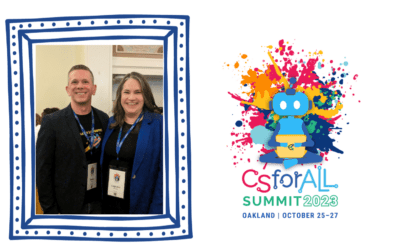The introduction of ChatGPT into educational settings has sparked a vigorous debate regarding its ethical implications, primarily centered on concerns about plagiarism or using AI to “do the work” for students, leaving them with little real learning or understanding. Proponents of the technology argue that AI can serve as a powerful tool for enhancing learning, providing personalized support and fostering creativity among students.
However, critics worry that the ease with which students can use ChatGPT to generate essays, solve problems and complete assignments may lead to an increase in academic dishonesty. They fear that reliance on AI-generated content might undermine the development of critical thinking and writing skills, as students may be tempted to pass off AI-produced work as their own.
This debate is further complicated by the rapid advancement and accessibility of AI technologies. Educators and institutions are grappling with the challenge of integrating these tools into curriculum in ways that maximize their educational benefits while minimizing the risks of misuse.
Policies and practices around the use of ChatGPT in classrooms are still evolving, with schools experimenting with various approaches to monitor and regulate its application. As this technology becomes more prevalent, finding a balance between leveraging its potential to enhance learning and ensuring academic integrity remains a pressing concern for the education community.
Leveraging Chat GPT to Support K-12 Education
Chat GPT can provide educational support in a variety of ways in K-12 classrooms, including acting as a “personalized tutor,” providing engaging interactive exercises and providing instant feedback and adaptive explanations; helping to foster creativity and innovation by assisting with brainstorming and problem-solving; offering diverse perspectives and providing faster, more comprehensive research and supporting teachers and administrators. Below are some examples of how to conscientiously leverage AI such as ChatGPT to support K-12 education:
1. Personalized “Tutoring” and Adaptive Learning
While almost every student could benefit from personal tutoring, this isn’t always within the bandwidth of teachers or administrators in K-12 education. However, with conscientious use of AI such as ChatGPT, it can be possible to provide one-on-one support in a more scalable environment.
For instance, a student can use ChatGPT to answer questions in real-time, provide additional explanations, or even re-word explanations when they don’t make sense to a student. Teachers can also use ChatGPT to provide personalized exercises, examples, practice questions and more for individual students.
2. Support in Creativity and Innovation
While many see ChatGPT as muting creativity and innovation, it can instead be used as a tool to bolster creativity. For instance, ChatGPT can engage students in creative writing exercises, brainstorming sessions and interactive storytelling, encouraging them to think outside the box and explore new ideas.
Some techniques educators can employ include having students collaborate with ChatGPT to develop original stories, poems or plays. The AI can provide prompts, suggest plot twists and even offer feedback on their writing. This collaborative process can inspire students to express themselves creatively and develop their writing skills in a fun and engaging manner.
Additionally, AI such as ChatGPT can assist in creative problem-solving exercises, such as designing experiments or developing solutions to real-world problems. By guiding students through the brainstorming process and offering diverse perspectives, ChatGPT can help cultivate innovative thinking and prepare students for future challenges.
3. Improving Language & Communication
Effective communication is essential for academic success and future-readiness, yet many students struggle with confidence in these skills. Chat GPT can support language learning, communication and comprehension by providing interactive and immersive language practice.
For instance, in foreign language classes, ChatGPT can engage students in conversational practice in various languages, helping them improve their speaking and listening skills. The AI can simulate real-life conversations and provide instant feedback. It also offers a “read aloud” setting that lets the student hear the pronunciation of words they may be struggling with. This interactive approach can boost students’ confidence in using a new language and accelerate their learning process.
ChatGPT can also assist with grammar and vocabulary exercises, reading comprehension and writing practice. By offering personalized feedback and tailored exercises, ChatGPT can help students become more proficient and confident communicators.
4. Enhancing Critical Thinking and Analytical Skills
Developing critical thinking and analytical skills is fundamental to future-readiness in education. These skills are essential for problem-solving, decision-making and understanding complex concepts. ChatGPT can enhance students’ critical thinking abilities by engaging them in thought-provoking discussions and activities.
For example, ChatGPT can facilitate debates on various topics, encouraging students to articulate their viewpoints, analyze opposing arguments and defend their positions. These activities help students develop logical reasoning and persuasive communication skills.
Additionally, ChatGPT can help to support computational thinking by presenting students with challenging problems and guiding them through the process of breaking down the problem, analyzing data and formulating solutions. This hands-on approach to problem-solving helps students develop a structured and analytical mindset, preparing them for future academic and professional endeavors.
5. Teacher Support and Professional Development
As well as academic support for students, ChatGPT offers significant advantages for teachers. Educators can leverage ChatGPT to enhance their teaching methods, brainstorm new exercises or applications, manage administrative tasks and engage in professional development.
ChatGPT can assist teachers in creating lesson plans, generating educational materials and designing assessments. By automating these time-consuming tasks, teachers can focus more on delivering high-quality instruction and providing individualized attention to their students.
ChatGPT can also serve as a professional development tool for teachers. Educators can use the AI to stay updated on the latest educational trends, research and best practices. ChatGPT can also facilitate peer collaboration by connecting teachers with experiences, ideas, and advice shared by colleagues around the world.
6. Addressing Diverse Learning Needs
K-12 classrooms are diverse environments, with students exhibiting a wide range of learning needs and abilities. ChatGPT could help address this diversity by offering differentiated instruction and support. For example, students with special educational needs can benefit from the personalized attention and tailored learning experiences provided by ChatGPT.
Additionally, ChatGPT can support English language learners by providing language scaffolding, vocabulary support and cultural context. This targeted assistance can help ELL students overcome language barriers and succeed academically.
Final Thoughts
While ChatGPT and other widely available AI technologies bring new challenges and considerations in education, it also has the potential to enhance an engaging educational experience when used strategically and conscientiously. As technology continues to evolve, the role of AI in education will undoubtedly expand, offering new opportunities to enrich the student experience and prepare the next generation for success in an ever-changing world.

Learning.com Team
Staff Writers
Founded in 1999, Learning.com provides educators with solutions to prepare their students with critical digital skills. Our web-based curriculum for grades K-12 engages students as they learn keyboarding, online safety, applied productivity tools, computational thinking, coding and more.
Further Reading
Computational Thinking: Its Purpose & Importance
Computational thinking, because of its name, is often misunderstood as being interrelated to technology (computers, in particular), making it often...
Recharged and Recommitted to Bringing Computer Science Education to All Students
For many people, computer science has been considered synonymous with coding or computer programming. And as the founder of Codesters, a platform...
Planning Digital Literacy Curriculum with ISTE, CSTA & Core Standards
Standards in education provide a crucial framework for defining what students should learn and achieve at various educational levels. These...




